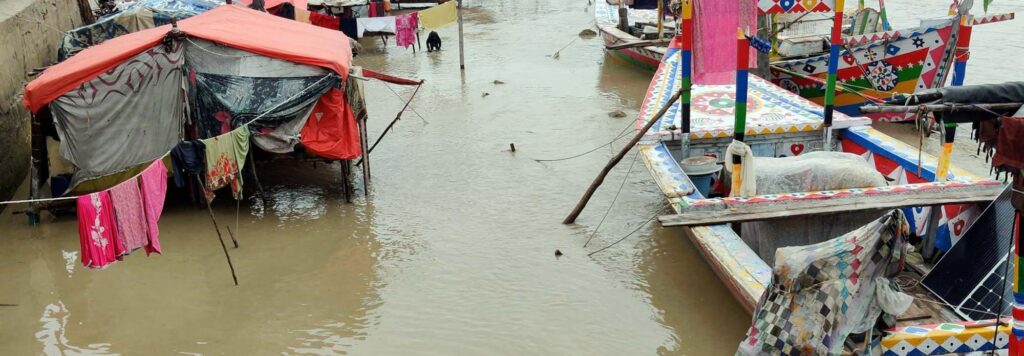Decision-makers from nearly every country on the planet will attend a series of high-profile international summits between now and the end of the year. Together, they offer a unique chance to address the biggest challenges facing people, nature and climate.
It all begins with the UN General Assembly and Climate Week in New York City on September 22nd. In October, leaders will convene in Cali, Colombia for the COP16 summit on global biodiversity goals, the same week as the World Bank and IMF Annual Meetings on international development finance. Many of these same leaders will also attend the UN climate summit (COP29) in Baku, Azerbaijan and the G20 Leaders’ Summit in Rio de Janeiro, Brazil in November.
With these successive and connected convenings, decision-makers have an unprecedented opportunity to finally put the world on track for a livable future.
If we look at the outcomes of past international summits, we might anticipate incremental change at best. But we do not have the luxury of continuing on that path. With the global challenges of climate change, biodiversity loss and rising inequality all heading in the wrong direction — and with dire consequences — piecemeal progress is not enough. Leaders need to not only connect these deeply intertwined issues, but also ensure this season’s summits build on one another to secure the transformative change the world needs.
Global Sustainability Goals Are Far Off Track
Nearly a decade ago in Paris, almost all the countries in the world agreed to keep global temperature rise below 1.5 degrees C. That same year, UN member states unanimously adopted the 17 Sustainable Development Goals, aiming to end poverty, eradicate hunger and tackle other challenges while spurring economic growth. And in 2022, 190 nations committed to 30×30, an agreement to address biodiversity loss by protecting at least 30% of the world’s land and ocean and restoring 30% of its degraded ecosystems by 2030.
These are grand ambitions. But so far, they haven’t translated into enough action. For example, last year’s Global Stocktake revealed the world is far off track from its 1.5-degree C target and headed for a disastrous 2.9 degrees C of warming by the end of this century. The world lost 3.7 million hectares of tropical primary forest in 2023 alone, equivalent to 10 soccer fields per minute!
This year offers the chance to finally bring global goals — and a better future — within reach. At upcoming summits and all the spaces in between them, it’s essential that leaders deliver three big things: more finance; stronger policies; and greater ambition.
Finance: More and Higher-quality Finance for Countries that Need It
Developing countries, which bear the least responsibility for climate change but tend to suffer the greatest impacts, will need roughly $2.4 trillion per year (excluding China) of investment by 2030 to meet global climate and nature goals. Around $1 trillion must come from external sources. Securing this amount of money — a four-fold increase from current levels of investment — will require significant shifts from international, domestic, public and private sources.
This year offers one of the biggest opportunities in decades to do so. It’s critical that wealthier countries step up — both as a moral imperative and economic imperative. Helping developing countries decarbonize and adapt is a prerequisite for avoiding far worse climate impacts and suffering everywhere. There is no path to staying within 1.5 degrees C without this finance.
COP29 has been dubbed the “Finance COP.” For the first time in 15 years, negotiators will set a new global climate finance goal, replacing the $100 billion wealthy nations provide annually to support low-carbon development in developing nations. It’s essential that they not only significantly raise the amount provided to meet the scale of poorer and more vulnerable nations’ needs, but also improve the quality of climate finance. With 60% of low-income countries in or near debt distress today, developing countries need a higher proportion of grants and concessional finance as opposed to loans.
Given that most of the world’s biodiversity and tropical forests are in developing countries — and that these ecosystems provide global benefits in the form of carbon storage, water provision and other services — wealthier, developed countries have a responsibility to support their protection. Developed countries promised to provide $20 billion in conservation finance by 2025, but they are currently far off track, with an $11.6 billion shortfall. They should come to COP16 prepared to deliver, as well as show how they’re shifting the $500 billion in harmful subsidies driving ecosystem degradation in the first place.
Beyond negotiations at COP29 and COP16, broader discussions on reforming the global financial system and unlocking investment from the private sector will be key to increasing sustainable finance flows from billions to trillions per year. As the world’s wealthiest nations, the G20 can help push through major reforms of the financial sector — including aligning all public and private finance flows with the goals of the Paris Agreement and Kunming-Montreal Global Biodiversity Framework and identifying ways to tackle debt relief and restructuring. Meanwhile, the World Bank/IMF Annual Meetings in October are a prime opportunity to increase multilateral development banks’ capital and ensure finance can flow to the nations and sectors that need it most. More and better finance is essential for delivering not only greater ambition, but existing nature and climate targets.
Policy: Laying Out an Integrated Development Pathway for Countries
Global targets generate momentum, but they’re only made real by action domestically. That’s why stronger national policies are essential for seizing opportunities for people, nature and climate.
National leaders can start by using this year’s gatherings to demonstrate real progress against their collective commitments. In recent years, countries have made collective pledges to transition away from fossil fuels, triple renewable energy, slash methane, shift to sustainable food systems and fully halt deforestation by 2030. By showing concrete signs of enacting these changes within their countries, national leaders can inspire others to make good on their own promises while ramping up ambition.
Finally, goals for nature, climate and people are deeply interconnected, yet policymaking has historically been siloed. Climate and nature policies will only be politically feasible if they are good for people and economies. Creating jobs, improving health, reducing costs and ensuring a “just transition” must be central to countries’ nature and climate strategies. To deliver these changes, policymakers need to take a whole-of-government approach to nature and climate goals, integrating them into agricultural, industrial, economic and other policies.
The G20 can advance this issue by creating a framework for countries to produce integrated economic development roadmaps that embed climate and nature. Done right, these roadmaps can then help countries attract more finance by laying out specific policies and plans.
Ambition: Higher Targets for Climate, Nature and People
At the same time, leaders need to set their sights higher.
To be sure, the world is already awash in commitments — and following through on them is imperative. If countries fulfill their existing climate plans, research shows the world is on a trajectory for up to 2.9 degrees C of warming by the end of the century. This is far better than the projected 4 degrees C if countries fail to fulfill their existing climate plans, but insufficient for ensuring a safe future. The months ahead are a pivotal phase for countries to set stronger targets that can safeguard nature, stabilize the climate and ensure people can thrive.
By COP16, all countries must submit National Biodiversity Strategies and Action Plans (NBSAPs) detailing how they will meet the collective Global Biodiversity Framework goals, including for 30×30. Yet so far, only a handful have done so. Countries should come forward with targets and plans that are both bold and pragmatic, showing which areas they’ll prioritize for protection and restoration, how they’ll transform food systems (a top driver of biodiversity loss), and how they’ll support Indigenous Peoples and frontline communities’ rights.
Countries are required as part of the Paris Agreement to submit new national climate targets and action plans (NDCs) every five years, with the next set due by February 2025. At Climate Week, COP29 and other moments this year, countries should share their intentions of making their next round of NDCs much stronger than the last. More stringent emissions cuts from G20 countries, responsible for over 75% of the globe’s greenhouse gases, will be especially important for garnering global momentum and inspiring more ambitious NDCs from all countries.
It’s important for leaders to recognize that biodiversity loss and climate change are deeply interconnected crises; strong NBSAPs have the ability to lead to stronger NDCs, and vice-versa. Countries should integrate targets from both their NDCs and NBSAPs into their national policies, plans and finance related to food systems, forests and water security, as these three interconnected areas are so critical to countries’ climate, biodiversity and development goals.
Creating a Positive Feedback Loop for Success
Each of this year’s international summits are connected to each other; decisions made at one event affect discussions and outcomes at others. Countries that set ambitious national climate and biodiversity goals, integrate these into new economic development pathways and back them with policies and domestic finance can attract private and international finance at scale — and address the nature and climate and human crises simultaneously. Reaching a strong global climate finance goal, for example, can give developing countries the confidence to submit strong NDCs in 2025. Meanwhile, the World Bank/IMF meetings and G20 summit are critical to drive progress on international financial reforms and ensure a successful and just global transition.
The next few months will help determine whether the world continues to settle for unmet goals and incremental progress — or if we will deliver the change needed to build a global economy that is good for people, nature and climate.












